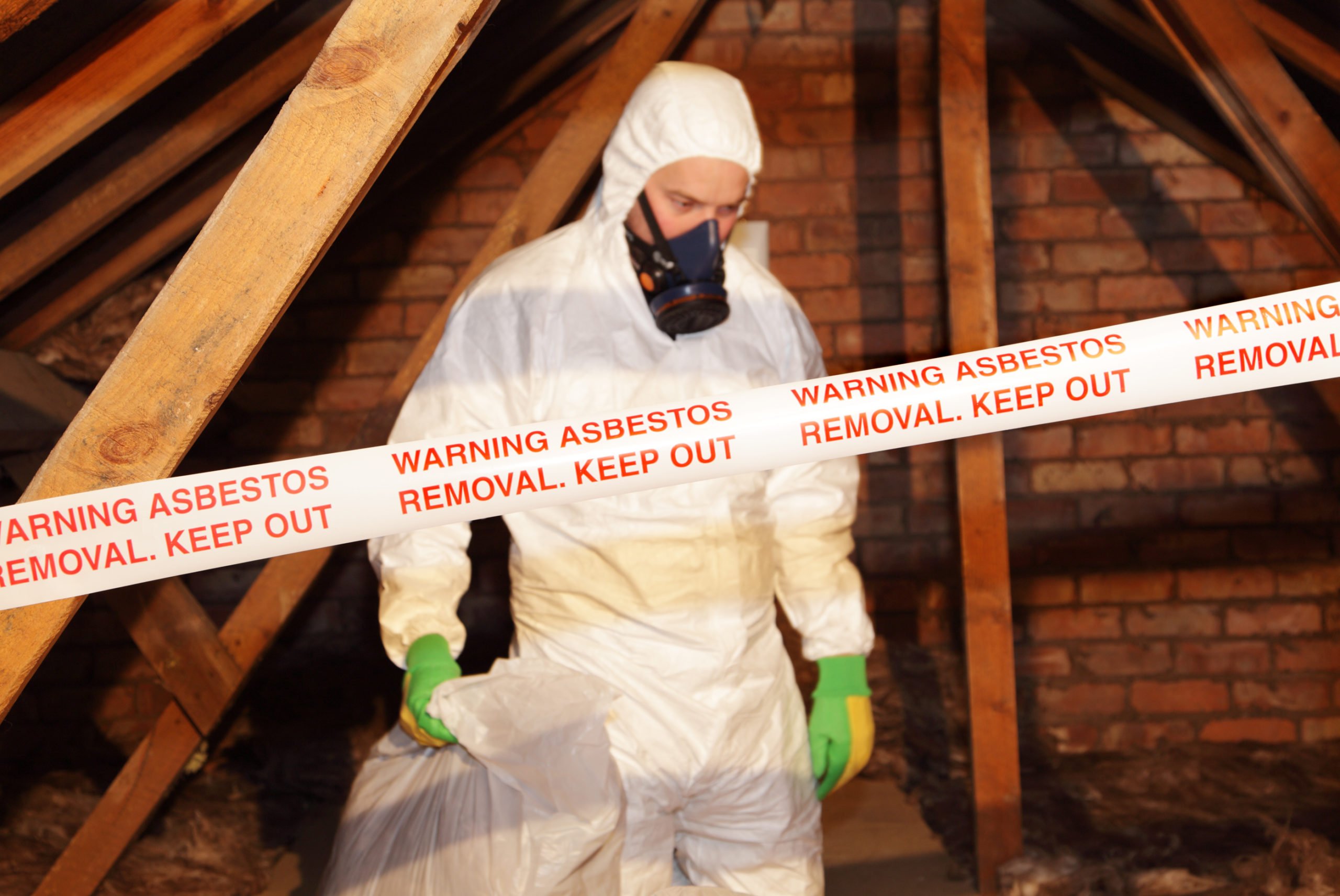Here’s one of the questions our team’s asked time and again –– “what is asbestos?” Our customers want to know what asbestos is, where it comes from and how and why it’s used in building materials. There are a lot of unanswered questions about the forms, uses and hazards of asbestos and RJS Waste Management is here to clear things up.
What is asbestos?
A commercial and industrial term, “asbestos” describes a group of silicate minerals that form long, thin mineral fibres called asbestiform. These fibres are so small they can only be seen under a microscope.
How is asbestos formed?
According to the Agency for Toxic Substances and Disease Registry: “asbestos is composed of silicate chains bonded with magnesium, iron, calcium, aluminium, and sodium or trace elements to form long, thin, separable fibrils.
There are six types of asbestos:
- Chrysotile (white asbestos)
- Amosite (brown asbestos)
- Crocidolite (blue asbestos)
- Tremolite (cream to dark green asbestos)
- Anthophyllite
- Actinolite
These asbestos types fall into two main categories — serpentine and amphibole.
Chrysotile is the only form of serpentine asbestos, which has layered curly fibres. Whereas amphibole, which accounts for the other five types, has fibres like jagged needles.
In its natural form, the ore is made up of fibrous strands. When the strands are disturbed, they break down into smaller fibres.
Where does asbestos come from?
As a naturally occurring fibrous mineral, deposits of asbestos can be found in rocks and soil worldwide. Chrysotile asbestos is sourced from serpentinite rocks. The faulting and fracturing of rocks contribute to asbestos forming and the amount of minerals ranges. Although mostly found underground, asbestos can be released when rocks break or soil is stirred up.
How is asbestos mined?
As a naturally occurring fibrous mineral, asbestos is mined. Surprisingly, as we now know how dangerous it is, asbestos is still being mined around the world.
Russia is the top producer of asbestos, putting out 700,000 million metric tons in 2022. While Kazakhstan produced 230,000 metric tons in the same year.

What is asbestos used for?
Asbestos has been attractive as a building material because it has some special qualities:
- Excellent tensile strength
- Poor heat conduction
- Resistance to chemicals
Where is asbestos found in old buildings?
According to the Health and Safety Executive (HSE), “Asbestos can be found in any industrial or residential building built or refurbished before the year 2000”.
Asbestos Containing Materials (ACMs) may have been used inside or outside buildings, mainly for:
- Roofing materials
- Floor and ceiling tiles
- Water pipes and pipe lagging
- Clutches, brakes and gaskets
Chrysotile is the most used asbestos in industry, found in everything from fireproofing to fibre cement boards. Amosite is often used in Asbestos Insulating Boards (AIBs), bath panels and partition walls. Other amphibole minerals are less commonly used but are still found in ACMs.
The HSE created some handy diagrams to help identify where ACMs might lurk one for homeowners and another for managers of industrial properties.
When was asbestos banned in the UK?
Although amphibole has been banned in the UK since 1985 and the importation, supply and use of all asbestos has been banned since 1999, asbestos is still used around the world.
Asia and the Middle East consumed around 1.3 million metric tons of asbestos in 2021. While Central and North America consumed 1,820 metric tons of asbestos in the same year.

What diseases can asbestos cause?
As asbestos mineral fibres are light, once disturbed, they become airborne. Microscopic, they’ll remain undetected and can be inhaled into the lungs. Here, they can collect and cause a variety of serious and often fatal asbestos-related diseases, such as
- Mesothelioma
- Lung cancer
- Asbestosis
- Pleural Thickening
Although blue and brown asbestos are believed more harmful than white, they all cause cancer. This called for their ban in the UK and many other countries.
Is asbestos a killer?
The UK Asbestos Training Association (UKATA) attributes asbestos as the UK’s biggest workplace killer with more than 5,000 asbestos-related disease deaths reported every year.
There were 2,544 mesothelioma deaths in 2020 as well as 530 mentioning asbestosis on the death certificate.
Industries using the most ACMs, with workers at most risk of death caused by asbestos exposure, include:
- Construction workers
- Transport workers
- Dock workers
- The military
In 2023, the HSE launched the Asbestos and You campaign to increase asbestos awareness among tradespeople in the UK. HSE’s acting head of construction policy sector, Tim Beaumont, said:
“Asbestos can be found in things like Artex, cement boards under eaves, garage roofs, old bath panels, boiler houses and fires and even mortar between bricks can contain asbestos.
“There is no known safe level of asbestos exposure but that’s not to say it can’t be managed safely.
“All tradespeople should make sure they know the basics about identifying asbestos. Before carrying out any construction work, there’s a legal requirement to identify whether asbestos is present and could be disturbed.
“Younger tradespeople need to know the dangers behind asbestos as it could affect them in later life like it is affecting older tradespeople now.”
Craig Evans, UKATA Chief Operating Officer, supports this: “The dangers of asbestos are very real, with over 5,000 people in the UK dying each year from asbestos-related diseases…
“UKATA members are committed to providing high-quality asbestos training, delivered by highly experienced and competent professionals with extensive knowledge and expertise in their field, to help prevent unnecessary exposure and protect the health and wellbeing of all those working in the industry.”
When was asbestos banned in the UK?
Although amphibole has been banned in the UK since 1985 and the importation, supply and use of all asbestos has been banned since 1999, asbestos is still used around the world.
Asia and the Middle East consumed around 1.3 million metric tons of asbestos in 2021. While Central and North America consumed 1,820 metric tons of asbestos the same year.
How can RJS Waste Management find and remove asbestos?
Hopefully, this answers your “what is asbestos?” question and more. Now let’s really clean up the issue…
Get in touch if you’d like an asbestos survey or you’re looking for asbestos collection and removal services. Our asbestos operatives are not only UKATA-trained but we’re also fully insured with a waste carrier licence. We have offices in Chichester, Oxford and London but provide asbestos services throughout the UK.
With their asbestos identified, cleared and disposed of safely, our customers are living and working happier and healthier than before.





